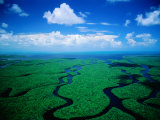|
|
|
|
|
|
REPTILES &
AMPHIBIANS
CALENDARS |
|
|
|
|
|
|
|
|
|
|
|
|
|
|
|
BOOKS ABOUT
REPTILES & AMPHIBIANS |
|
|
|
|
|
|
|
|
|
|
|
|
|
|
|
Reptiles & Amphibians Posters, Charts, Prints, & Calendars
for the science and social studies classroom, home schoolers, theme decor.
|
science > biology > zoology > REPTILES & AMPHIBIANS < animals
|
|
Both reptiles and amphibians are vertebrates, animals with a backbones and an internal skeleton; they are also cold blooded, meaning their body temperature is dependent on their environment.
Most reptiles are carnivorous (meat eating) and oviparous (egg-laying), covered with dry scales and crawl with small short legs (lizard), or move on their belly (snakes). The word ‘reptile’ is from Latin repere, ‘to creep’. The four orders of the class Reptilia are Crocodilia - crocodiles, caimans and alligators, Sphenodontia, Squamata - lizards, snakes and amphisbaenids, and Testudines - turtles.
Amphibians are tetrapods, four legged vertebrates, and typically begin their lives in water and metamorph into terrestial adults. Amphibians populations have been declining in recent years, perhaps because their soft skin that easily absorbs water puts them in very close contact with man-made pollutants and toxins in their wetlands environments.
• “Behold the turtle. He makes progress only when he sticks his neck out.” ~ James B. Conant
• “I know up on the top you are seeing great sights, but down at the bottom we, too, should have rights.” ~ Yertie the Turtle and Other Stories, Dr. Seuss
• “Never insult an alligator until after you have crossed the river.” ~ Cordell Hull
|
|
|
|
|
|
|
|
|
• Cobra, India poster
• Spanish language posters
|
|
North American Snakes - Snakes descend from lizards. Like them, they have loosely articulated skulls, and most can dislocate their lower jaw in order to swallow prey much larger than their own head.
They differ from legless lizards by their lack of eyelids and external ears. Most species are non-venomous. They are generally shy and docile and try to avoid humans. Some are even kept as pets.
The venomous snakes use their natural weapon primarily to subdue and kill prey. They are not normally aggressive, but when threatened, they will protect themselves. Its best to avoid them as some have venom powerful enough to cause painful injury or death. This causes many people to fear snakes. North Americans are justified in doing so because there are some really nasty serpents slithering around the countryside.
This poster presents the most widespread North American species. It makes it easy to tell if a particular snake is a threat, as the graphic design divides them into non-venomous (green background) and venomous (red background) species. It's the latter you really need to be able to identify, because the others may give you a painful bite, but won't kill you.
|
|
|
|
|
|
|
|
|
|
Paga, in far northeast Ghana, is known as the sacred crocodile village- the nearby fresh water ponds and lakes are home to crocodiles regarded by the local Kassena tribe as embodiments of their ancestors spirits.
• more Venezuela posters
• Ghana posters
|
|
|
|
Wetlands can exist nearly anywhere that water flows, Antarctia is the only continent that doesn't have any.
While there is infinite variety in their makeup – that is, in the local combination of climate, topography, water chemistry and circulation, flora, fauna, average sunlight and other elements – wetlands come in two funadmental varieties, coast and inland. ...
• more biomes posters
• more aquatic posters
|
|
|
|
Jean Rostand
b. 10-30-1894; Paris, France
d. 9-4-1977
Jean Rostand was an experimental biologist who was a philosopher about the responsibilities of humanity and our place in nature, a science writer, and activist against nuclear proliferation and the death penalty.
His father was playwright Edmond Rostand most noted for his play Cyrano de Bergerac.
Jean Rostand quote ~
• “It is sometimes important for science to know how to forget the things she is surest of.”
|
|
|
|
|
|
previous page | top
|
|
I have searched the web for visual, text, and manipulative curriculum support materials - teaching posters, art prints, maps, charts, calendars, books and educational toys featuring famous people, places and events - to help teachers optimize their valuable time and budget.
Browsing the subject areas at NetPosterWorks.com is a learning experience where educators can plan context rich environments while comparing prices, special discounts, framing options and shipping from educational resources.
Thank you for starting your search for inspirational, motivational, and educational posters and learning materials at NetPosterWorks.com. If you need help please contact us.
|
|
|






















